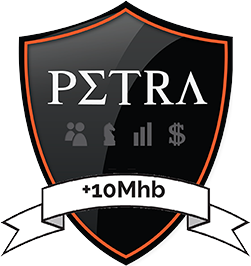For most companies, managers offer team member feedback only once a year during an annual review. It’s during this mega-evaluation that employees learn if they’ll receive a title or salary increase. That’s a lot of weight packed into one meeting.
Just like teachers give students a handful of quizzes to prepare them before the big exam, managers should offer team members bi-weekly reviews to engage them before the annual review. This way, team members have the opportunity to improve themselves throughout the year and before their weighty reviews.
This benefits the team members and your organization. If team member Sam is not meeting expectations, don’t you want him to know so he can fix the problem before an entire year passes? And when team member Suzie does something extraordinary, don’t you want her to know so she can continue the practice throughout the year?
Most importantly, though, as a company leader, you have the opportunity to positively affect human beings. Your team members dedicate at least 40 hours a week and more than 2,000 hours a year to your organization. Give back by encouraging them to be the best individuals they can be, personally and professionally. Consistent mini-assessments that offer constructive feedback accomplish this.
When I suggest bi-weekly team member feedback sessions to the entrepreneurs I coach, I give them an assessment graph to help structure their meetings. The diagram has four quadrants on an X and Y axis. The X axis measures productivity![]() and the Y axis gauges attitude and company culture fit. By determining where the team member lies on each axis, you can pinpoint what type of player he or she is: A, B, B/C or C.
and the Y axis gauges attitude and company culture fit. By determining where the team member lies on each axis, you can pinpoint what type of player he or she is: A, B, B/C or C.
Here’s how I recommend incorporating the diagram into your feedback sessions:
- Quantify your axes: Add scales to each axis and then set categories to earn points so you can objectively quantify a team member’s quadrant. For example, to pinpoint exactly where Sam lies on the Y axis, you’ll set 10 culture/attitude benchmarks for which Sam can earn one to 10 points. Perhaps you give Sam eight points in the “consistently strives to be the best” category, and then five points in the “addresses concerns” category. After scoring Sam on each culture benchmark, he’ll have a cumulative culture score for the Y axis.
Do the same for the X axis, but instead of culture, you’ll be scoring productivity benchmarks. Let’s say after you’ve assessed Sam on both axes, his total score is 80 on the culture axis and 45 on the productivity axis. See where the scores intersect, and you’ll find he’s a B player.
- Include your team member: It’s important Sam arrives at the meeting with his own scores for each benchmark. This makes the exercise two-sided, which will engage Sam and spur communication.
When you compare Sam’s self-assessment with your assessment, a meaningful discussion is sure to develop — especially around those benchmark scores that differ greatly.
- Provide actionable advice: If, during the powwow, you and Sam agree he could use some help “addressing concerns,” give him some valuable advice he can apply the next time he’s uneasy about a task, decision or responsibility.
- Ask how you can help: Even though it’s called “self-improvement,” betterment requires support. Before Sam leaves the meeting, ask him if there’s any way you can help him reach his improvement goals. By offering a helping hand, you let Sam know you’re in this with him and want him to succeed.
As you assess your team, keep in mind that most organizations have a lot of B players. That’s good news because B players align with your organization’s cultural benchmarks but just need a productivity boost. By equipping those team members with some simple efficiency tips, they’ll be A players in no time.
With that being said, it’s more difficult to elevate a B/C player to the next level because he or she is lacking company culture and attitude alignment. Attitude is an attribute whereas productivity is a skill set. Attributes are more difficult to correct.
Further, B/Cers are typically highly productive, so it’s tough to criticize them, even if it is constructive. What you have to realize is that culture is everything. One negative Nancy can unravel your organization.
As for the C players, work with them. Help them. If nothing seems to change after a quarter, set them free. Let them go somewhere were they can be an A player.
For a free download of my player-metric diagram, visit www.petracoach.wpengine.com.
Originally published in The Tennessean.
photo credit:<a href=”http://www.flickr.com/photos/baltic-development-forum/5380629689/”>Baltic Development Forum</a> via <a href=”http://photopin.com”>photopin</a> <a href=”http://creativecommons.org/licenses/by/2.0/”>cc</a>





